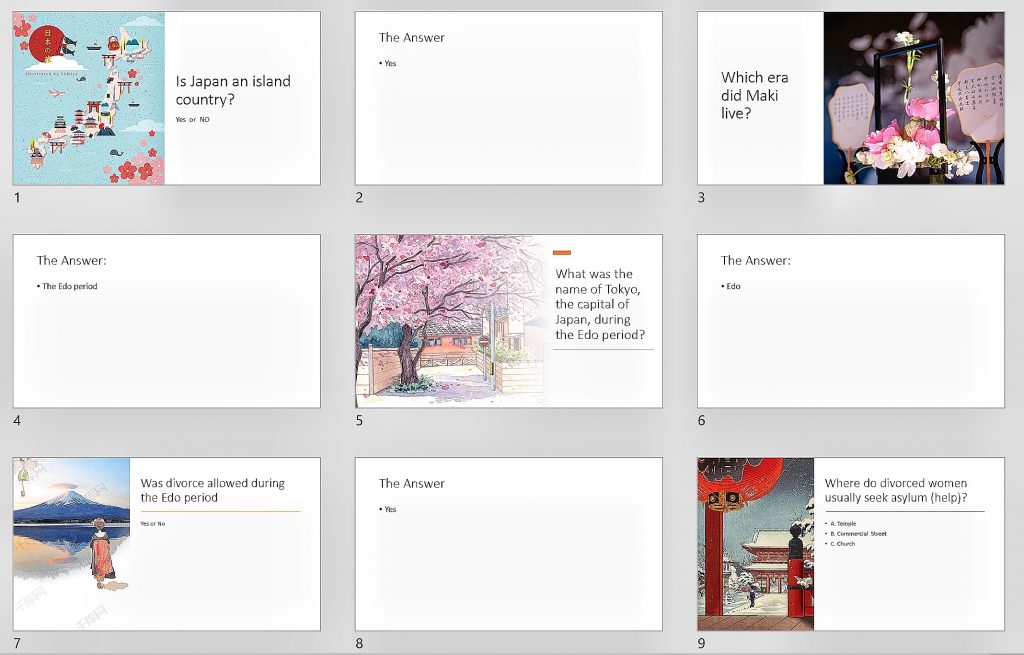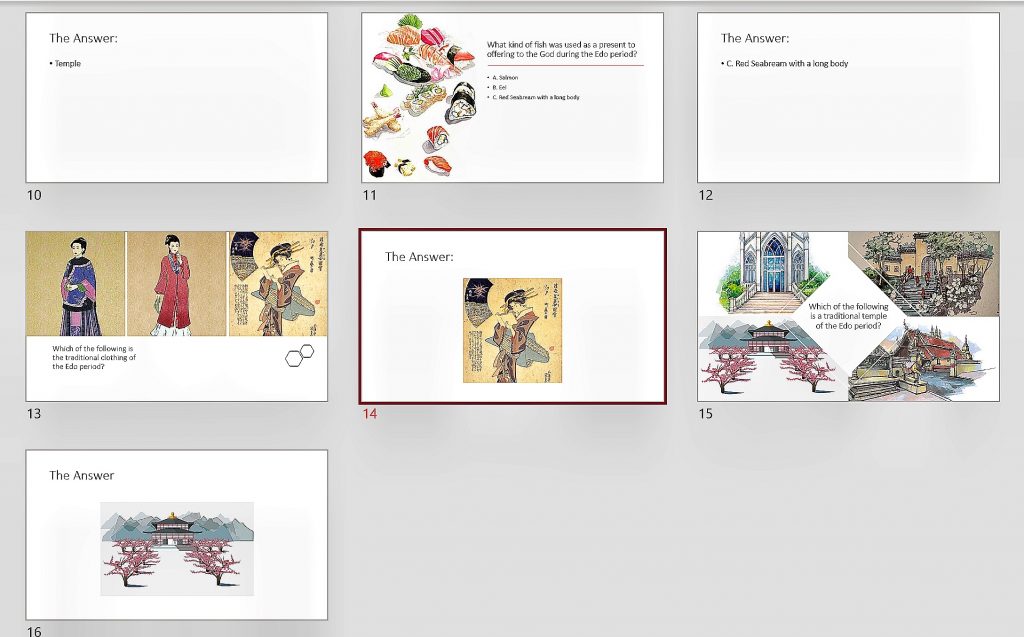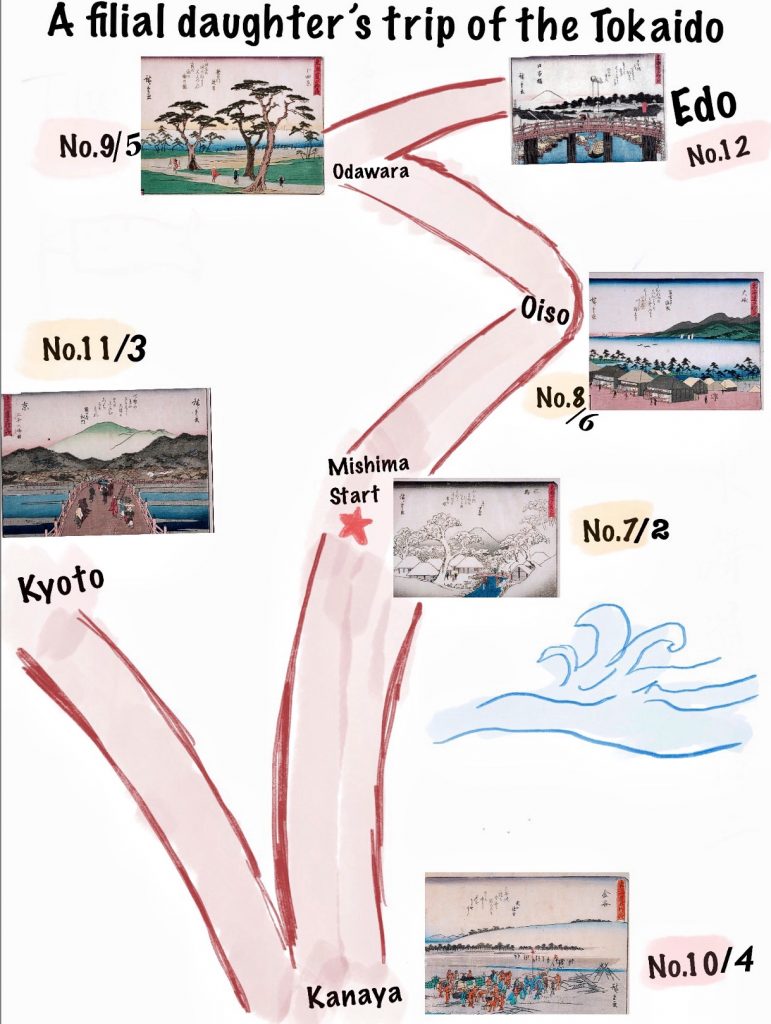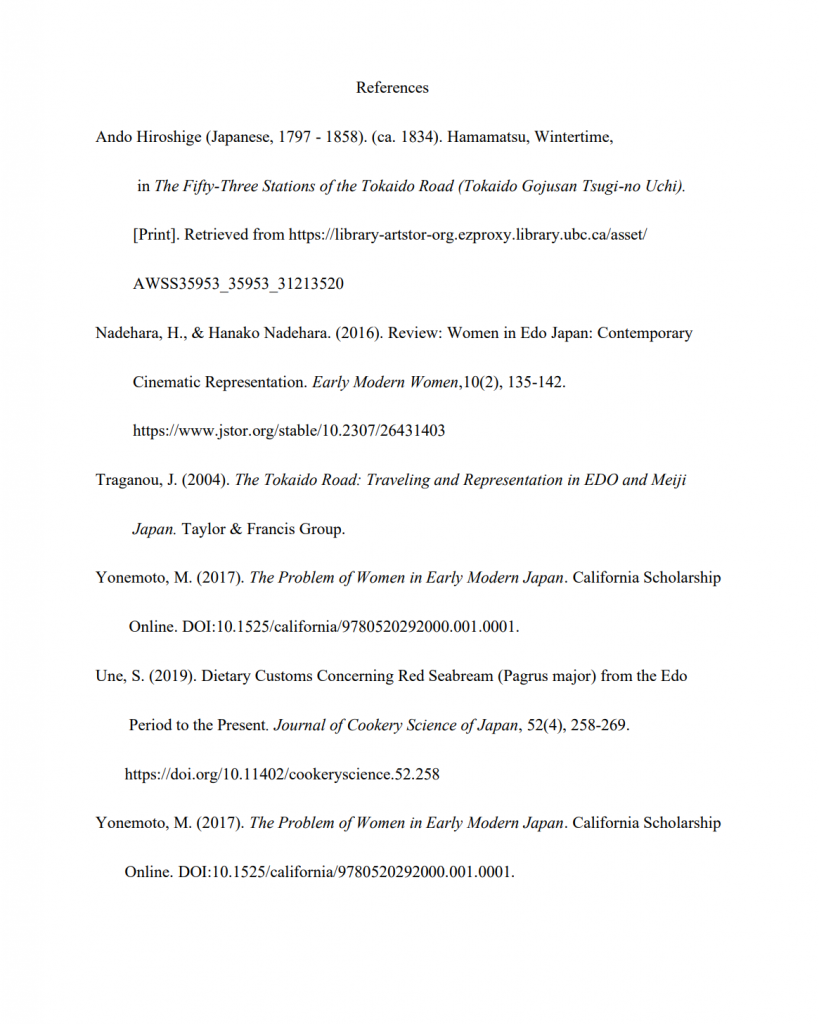Tianqi Chen
Game Commentary:
Filial piety, requiring respect, obedience, and care for one’s parents and elderly family members, was one of the most significant concepts of Confucian values, and a heavy influence on East Asia, including early modern Japan. The classic Confucian expectation of women’s filialness was raised in Liu Xiang’s Lienü Zhuan, emphasizing the highly idealized “exemplary woman” (lienü) as a model for behavior and comportment (Yonemoto, 2017). Within patriarchal Confucian society, the standard of the exemplary woman is based on her devotion to men, such as a husband, father, son, or teacher, and to family honor. Through sacrifices, women offer benefit to others, constituting one of their virtues (Yonemoto, 2017). In the Edo period, a woman’s filial piety was defined by serving her husband’s parents and bringing honor to her family through marriage. Ito Maki (1797–1862), was a commoner woman who was the eldest daughter of a prominent physician in Mimasaka Province. Her father, Kobayashi Reisuke, was a physician with a broad intellectual network and a student of Western science (Yonemoto, 2017). Maki received a good education and was able to express her filial piety and longing for her family of origin in her writing in later days. Maki’s family underwent various traumatic experiences, which profoundly influenced Maki’s life and created a filial bond of attachment between her and her parents. Maki was adopted by her childless uncle Kōzaemon, and she moved from Mimasaka to join her uncle’s family in Edo. Maki’s uncle Kōzaemon has higher social status than Maki’s father. He had acquired hatamoto status (Yonemoto, 2017).
Because marriage in the Edo period was about equal social status, through adopted by her uncle, Maki could raise her social status and marry into a better family, fostering a good reputation for her natal family. Therefore, this journey from Maki’s hometown Mimasaka to join her uncle’s family in Edo became a life-changing choice that would define the rest of her life. Based on historical evidence, Maki chose to be adopted by her uncle and married into a better family, thus fulfilling her duty of leaving a good reputation for her natal family. However, Maki also paid the price. She was not allowed to contact her original family at all, even though she missed them dearly. Maki could only express her filial piety to her parents by writing letters, and she once mentioned that she felt delighted when she saw the map of her hometown. Unfortunately, Maki never returned to her hometown for the rest of her life. She noted in her letter a desire to fly back to her hometown like a bird. Although women had very few choices in the Edo period, there were still some choices that women could make to escape the fate of marriage, such as serving in a wealthier home. Therefore, this map game adapts Ito Maki’s real-life story by giving her a second option to serve in a household of rank and to raise her stature and that of her natal family through hard work. Two routes are given to her as two different options: go to Kyoto and work, or go to her uncle’s house at Edo. These two routes both travel via the Tōkaidō highway, the most essential and convenient route during the Edo period, following the fifty-three post stations (limited here to six critical post stations).
Game Instructions:
Material and Procedure:
- Two single six-sided dices
- The map board with the number of each station, and each station has two numbers
- The question cards
- There are two options for the player: one is to go to Kyoto and work, the
other to go to Maki’s uncle’s home in Edo–the player make the choice. - After the players make decisions and roll the two dice, the number of dices the players
throw determines the station where they land. - When the players arrive at the station, they must answer the common knowledge
questions about Edo Japan, and only when they give the correct answer can they move
on. - The players who arrives at their destination first is the winner.
The question cards with answers:


Power point link to question cards:
https://docs.google.com/presentation/d/17BGoX9Zu06KoXmkvrkhSngXmKWHmRXkQ9
Vmq26ImVUw/edit#slide=id.p1
The Game Board:

The link of the dices:
https://docs.google.com/presentation/d/1O5BAYfX4uRIYETumdkKtKCzHw84T_pR3Fu-3
O-fBiiw/edit#slide=id.gd3777506be_0_12

Unless I completely misunderstood the instructions, I think this game may need a bit more work. The story of Maki sounded very interesting and I kind of wish that had been more incorporated into the game. It would have been nice to have the game give more of the story in the question cards or additional game events that represent what Maki’s travels along the Tokaido were like. While playing the game, Maki is forgotten to be honest. While it is a game about her travel, the question cards feel random and not really about Maki except the two questions about which era she lived or if she could get divorced.
The path from Mishima to Kanaya and then Kyoto is quite short. As well as the route to Edo. Now, for the gameplay, from when I played it with another player, we understood the rules to be that you roll a dice and that determines the space you land on. This however kind of contradicts the idea of making a decision to go to either Kyoto or Edo. To go to Kyoto, you need to roll a 11 or a 3. However, for Edo you need a 12 which has a much less chance of rolling. You may decide to go to Kyoto but instead roll a 5 and have to go to Odawara which is in the opposite direction. Once at a station you have to answer the question card and get it right to stay. I think if you get the question wrong you go back to the start? That’s what we did and basically kept rolling till we either got 11 or 3 or a 12 which didn’t take long. The question cards do lack a bit as well with simple questions and simple answers. The one I did not get right was the one about seeking asylum. I did not think that temples were very welcoming of women, so I guessed churches but now thinking back, I know Christianity was being eradicated by the Tokugawa during this time, so it was a silly guess. I thought perhaps nunneries but that wasn’t an option.
I do like the board design. It makes me think of brush strokes with its simple road designs. I just wish there was more road to travel on. It does remind me of ideas of calligraphy or hand drawings, similar to ukiyoe from the Edo period. The selection of images was also very nice and visually appealing. The colours stood out and I think it was a nice touch.
A FILIAL DAUGHTER’S TRIP OF THE TOKAIDO:sugoroku review
First of all, I like the main idea Tianqi states in the game: filial piety. The famous Confucian concepts is widely used in a number of East Asian literature, but it is rarely used on female. According to Tianqi’s commentary, in the patriarchal Confucian society, the standard of the exemplary woman is women’s devotion to their men, such as husbands, fathers, sons, teachers, and family honor. Through the sacrifices, women benefit others, which constitute a female’s virtue (Yonemoto, 2017). Therefore, the value of “exemplary women” in that period is based on what they did for family or others. Thank you Tianqi, I learnt a lot from this concept. Next, I find Maki’s experience is similar with Tsuneno’s experience, marriage influenced them a lot. The story of Maki is really interesting and attractive. I like how Tianqi created the game by providing two routes for her, working symbolizes that she can choose her own way of life, and going to her uncle’s house symbolized that she may follow the filial piety during her rest of life. The game instruction is very clear. The most enjoyable part for me would be the “question card” part. According to the game, when the players arrive at the station, they need to answer the common knowledge questions about Edo Japan, and only when they give the correct answer can they move on. I think this part enhanced the interactivity of the game and questions are so easy to go through. In my opinion, if the questions could be more complicated or hard, I think that will make the game more exciting and challengeable.
For the game: a filial daughter’s trip of the Tokaido, I really love the clear background and the cute freehand sketching. After playing this sugoroku with my friends, sometimes we get confused with the two numbers on above the pictures, but it is still fine to play. When we went through the game, we always went back to the story part in Tianqi’s commentary. Tianqi builds up a picture of Maki’s world, immersing us in temple, village and town life in an experience akin to time travel. The most important thing is, in this picture of Maki’s world, her journey immerses us in an experience of a hard life for a woman in Edo period.